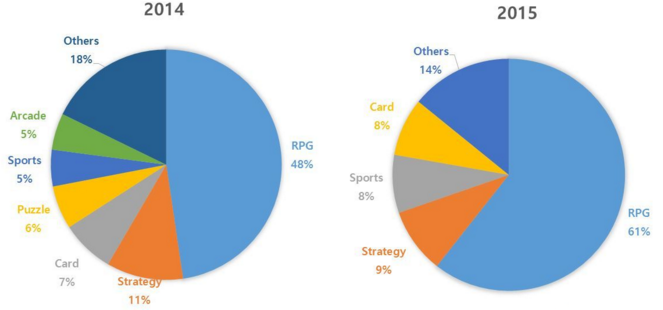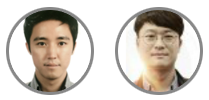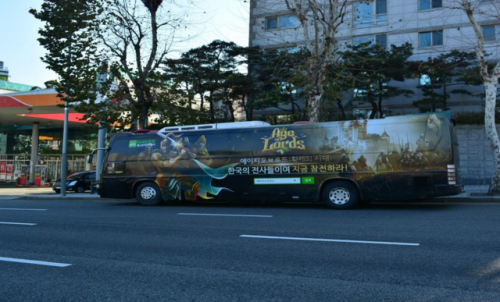How to promote games on the South Korea mobile games market? Yuliya Nabieva, Asian Market Expert, shared some tips on it.

According to SuperData Research estimates, the volume of a game mobile market in South Korea in 2015 amounted to a whopping $1.3 billion.
The wide proliferation of mobile devices and the availability of 4G networks lead Korea to the top among other regions by the quality of the audience as well. An average life cycle of a player in Korea is 14.3 weeks, which is 5 weeks longer than in the USA. Around 83% of adults in South Korea constantly use more than 3 mobile apps on their devices.
Major app stores
The major platform in South Korea is Android. Over 60% of users have gadgets featuring this operating system. Earlier the domination of this OS was absolute. But over the past several years the situation has changed. Today, around 33% of Korean audience use the products of Apple. Such shift became possible with the release of a widescreen iPhone.
Three stores stand out among the Android app stores:
- Google Play;
- T-store (controlled by mobile operator SK Telecom);
- Naver Appstore (or N-Store, the store with a game portal by Navel search engine).
The market shares look as follows:

Each of the Android stores in South Korea demonstrates its own specifics. Let’s highlight the top features and trends:
- T-store is preinstalled onto mobile devices with a contract of SK Telecom mobile operator. So far the market share of T-store is diminishing versus Google Play and Apple App Store.
- T-store and N-store are different by the hardcore audience. Casual games show good results in Google Play and Apple App Store with social network integration and Kakao Talk messenger.
- In 2014 Kakao Corp. started targeting the midcore players by launching g.kakao.com Android game store. But the store has never become a popular players’ destination. So, most of the proceeds of the gaming department of Kakao Corp. come from titles, released with the integration with Kakao Talk in Google Play and Apple App Store.
The average ARPU of hardcore games in South Korea in N-store reaches $1.5-$3.
The average ARPU of casual games with Kakao Talk integration on Google Play varies from $0.8 to $1.2.
If we are talking about game genres, then it’s worth mentioning that more and more role-play games appear in this market:

According to the report by Adways, the role-play growth trend will remain steady in the future.
Promoting games in South Korea
Each successful game release in South Korea is followed by a meticulously planned marketing campaign. This allows generating good revenue from the very start.
So, Nexon, famous for its online games, released a mobile role-play game HIT during the second half of 2015. The game grossed $1 million right on the day of release.
Webzen has grossed $700 thousand on the first day of sales from T-store alone with its title MU Origin.
This is what I learned about the stages of game release in Korea from an interview with CEO of Eidetic Marketing Ashley Jung and the Senior International Marketing Manager of Eidetic Marketing Michael Ji.

Ashley Jung and Michael Ji
Talking about marketing in South Korea one can outline three major stages that all the games come through pre-release activities, at-the-release activities, and after-release activities.
Let’s consider the preparation for the release phase in details.
Korea has a unique approach to preparing a game for publication. We call this phase a “preorder”. More than 90% of Korean developers launch a preorder campaign two-to-three weeks before the official release of the game regardless the distribution scheme of the product.
A game can be preordered one of the three ways: directly through the store, through special preorder channels on mobile apps, as well as via a special landing page that the publishers make specifically prepare for the game release.
Preordering through the store is typical for T-Store and N-Store. It works like this: every month the players select what they want to have based on trailers and screenshots of games to be released. And the users are notified at the moment of release of selected games.
Applications participating in the preorder are selected by content managers of specific stores and are placed as banners on the portal’s homepage.
In total, you can expect 40-50 thousand installs from this activity, 35% of which will not only install the game but will continue playing it for several days.
Here is how the preorder campaign of Age of Lords looked like in Naver store:
But the main platforms for promoting games and inducing interest to new titles are the specialized preorder channels.
As a rule, these platforms have a wide user base with loyalty programs engaged in sending out preorder coupons. Below we have a list of the most trusted names in the business:
Most of these channels charge a fixed rate for a preorder campaign but some of them work based on installs with the ability to track the quality of installs through Tune’s MAT tools, being the most popular foreign marketing tools in Korea.
By the way, the users from Korea are used to receiving bonuses inside the game for participating in preorder campaigns, so that is something to keep in mind beforehand.
In addition to campaigns described above, you can also create a website devoted to the game release and promote it via the ad networks.
You need to collect phone numbers of users at the moment preregistration on the website to be able to inform the users by SMS at the moment of game release: this will give you a cumulative effect.
If you marketing budget is not limited by some standard channels of user acquisition, we recommend turning to outdoor ads on transport. It is extremely popular in Korea right now. It is also referred to as ‘bus wrap’.
Such ads are very effective among the young audience and have great virality effect. Plus, it is by far more affordable than classic outdoor ads. Youngsters often place pictures with branded transport on its route in central Seoul on their social network profiles.
Also, any campaign can be supported by publications in professional blogs and on news portals. In Korea $3000 buys you 30-40 guaranteed publications.
Of course, you may release your game without promo support during the first days as many of the European companies do. But, as a rule, even if you get some installs, it will be thanks to the general interest of young Koreans to everything from the West.
Prices for promotions
Preordered install will cost you $1. Our experience shows that it will not be any different from a motivated install and will have a low conversion into active users.
It happens because marketing agencies often place a preorder not only in popular and recognized news resources but simply in networks selling motivated traffic, where a user gets money for an install. Be careful while selecting a partner, or such campaign might lead to poor start and negative feedback from Google Play and Apple App Store users, who, for instance, did not get a bonus for the install.
Attracting a quality user in one of the leading advertising networks will cost $3-5 (according to cashslide.co.kr advertising network) but not a single one of them can guarantee a large number of installs.
So, we come to a conclusion that Korean users are actually no different from American users by cost. Whereas the South Korean market is smaller and the ARPU is closer to the similar one in the US.
Noteworthy, Korea does not have a publishers’ market as such. From time to time, large local developers take foreign brands for publishing. But it seems to be more of an exception from the rule. The market of intermediaries is also scarce. The only thing they can offer is game’s featuring at the start on one of the networks for preordering for an interest from proceeds. They do not spend real money on user acquisition as such.
One of the soundest approaches, having said all of the above, is releasing the product using your own means with an integration of Kakao Talk SDK (the team of Kakao Corp. accepts all of the product presentations made in a featured form – follow the link here).
The initial marketing budget can vary from $30 to $100000. If you have a more conservative (budget) strategy, you can release a game following the release with publications in industrial media resources. Later, you will be able to gather stats on proceeds and the quality of the audience and increase the number of users accordingly.


